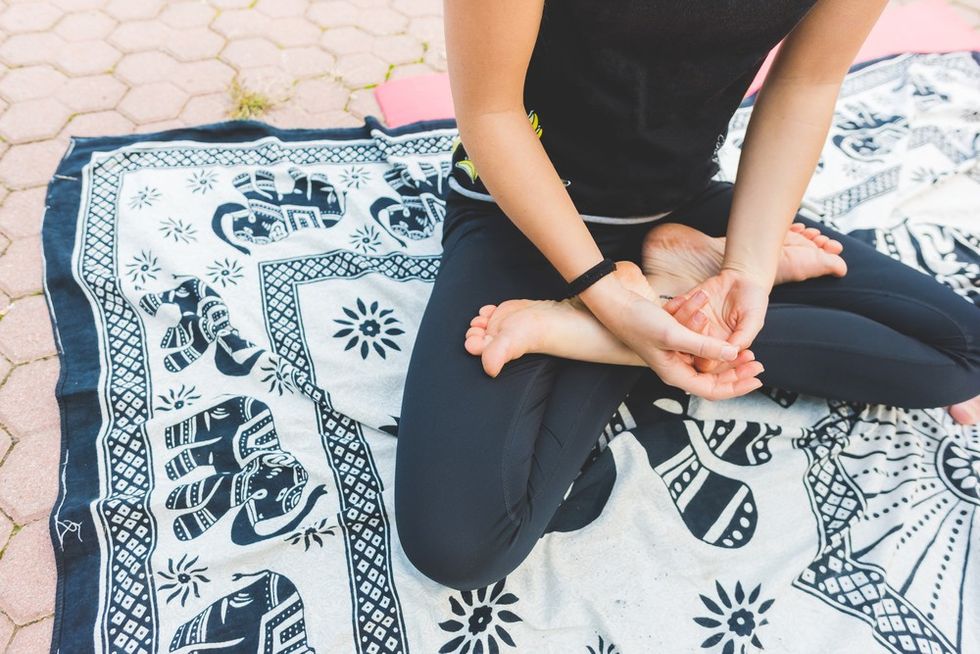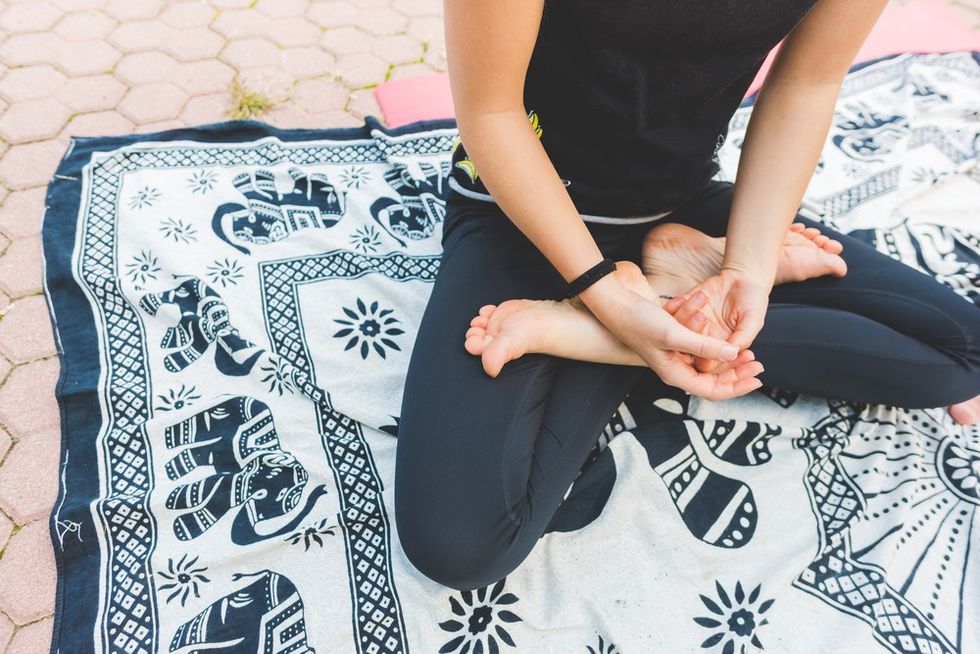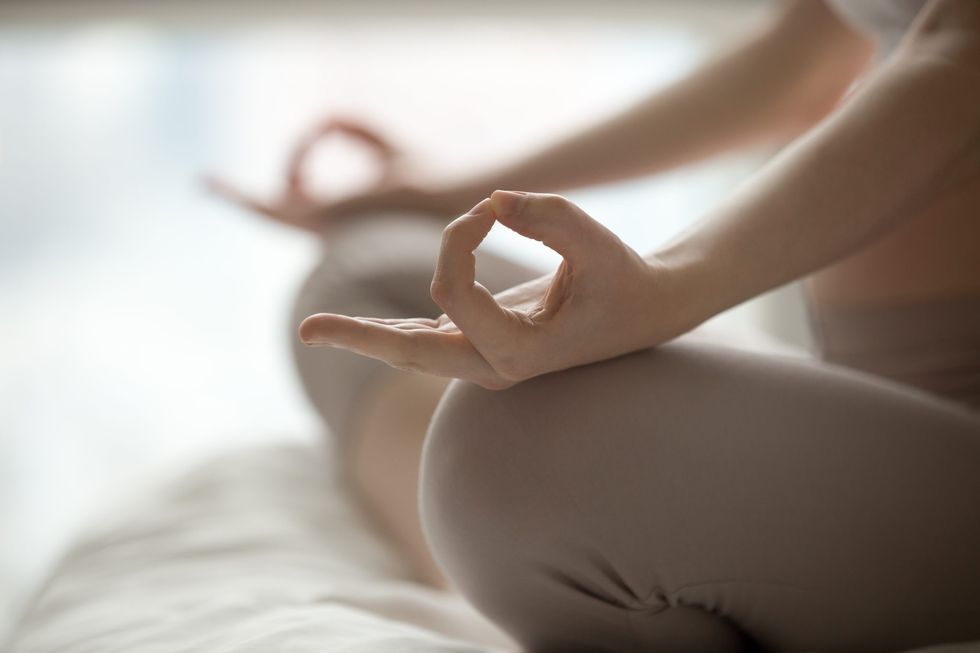
How to Make Meditation a Daily Habit in Just 60 Seconds a Day
Years ago, meditation transformed my anxiety.
What was once an unshakeable sense of panic had become calm and reflective like a lake with still water.
As nice as this story is, in retrospect, I often leave out what seems like a small detail: I had a very hard time making meditation a daily habit.
And it turns out, I’m not alone. I’ve surveyed hundreds of meditators and found that the number one thing holding them back is the difficulty in sticking to a consistent meditation practice.
Meditation is not just for relaxation; it’s primary purpose is to develop the capacity to respond skillfully and gracefully to life’s difficulties as well as its joys.– Shyalpa Tenzin Rinpoche
So, you read a blog somewhere, heard about the incredible benefits, or maybe even read an entire book on meditation. Whatever it was, it convinced you to try out meditation. Now you’re curious. Or maybe you want to make it a part of your daily life.
There’s only one problem: trying out meditation once and making it a daily habit are two very different things. It can be very difficult to make meditation a daily habit if you don’t know the right steps to take. So, where do you start?
Luckily, there’s a simple technique you can utilize in various different ways to help virtually guarantee you make meditation a daily habit. I call it the Path of Least Resistance, and it’s all about removing the resistance that keeps you from taking the particular action in question (in this case, meditation).
Here are the steps:
1. Set a dedicated meditation schedule
This step sounds simple, but it’s critical. One of the most important steps to making anything a daily habit, especially meditation, is to do it on a set schedule.
Set a daily schedule for your meditation session (preferably early morning to start your day off right) and stick to it no matter what. And if something gets in the way? Make sure to reschedule your session and make it up as soon as possible.
2. Create a dedicated meditation space
It’s important to not just set a dedicated schedule, but to also create a dedicated meditation space.
Creating a dedicated meditation space can be as simple as clearing the corner of a room of clutter and setting down a pillow (you can buy a meditation pillow or fold a bed pillow in half).
Whether it’s an entire room, a corner, or somewhere else the most important thing here is that you remove all possible distractions and place nothing in this space except for what’s necessary.
3. The 60-second jump-start
One of the major mistakes I’ve discovered people make when beginning their meditation practice is in believing that they have to meditate for some specific amount of time.
What ends up happening is you quit before you’ve even begun because the mental inertia you have to overcome in convincing yourself to sit for twenty or thirty minutes can at times be too much to handle.
In order to remove this resistance and create a clear pathway to making meditation a daily habit, sit for just sixty seconds.
Yes, that’s right. Sit for sixty seconds.
That might sound crazy, but it’s not. The most important effort to making meditation a daily habit is simply to sit every day, no matter how long you sit.
Coach.me, the goal-tracking app, reviewed data from users who participated in a meditation course and found that meditators who practiced for just eleven days were over ninety percent more likely to continue in their practice from the twelfth day and on. And these findings weren’t dependent upon any specific length of meditation time.
By sitting for just sixty seconds, you remove a lot of the mental inertia that so often keeps us from taking action and make it easier to convince yourself to sit and meditate.
4. Keep it simple
We’re generally introduced to meditation through a specific method, which is unfortunate because that’s not always the simplest form or the best beginner practice.
Do yourself a favor when working to make meditation a daily habit and keep it simple. After sitting down in a comfortable position, adopt a strong posture and follow these simple instructions to practice mindfulness of breath (mindful breathing) meditation:
- Turn your attention inward. Become aware of your body and of any bodily sensations that arise.
- Become aware of your breathing. Now, turn your attention to your in-breath and out-breath. Follow the length of each in-breath and out-breath from beginning to end.
- Acknowledge that which arises. While following the length of your breath, thoughts, feelings, and sensations will arise and distract you from concentrating on your breathing, and that’s perfectly OK. Imagine yourself projecting a field of awareness which acknowledges everything within a given moment. With that in mind, simply acknowledge what arises and don’t treat it as a distraction or anything negative.
- Return to your breath. Simply return to following your breath just as before.
Once you’ve gotten the hang of this method and really made meditation a daily practice, you can venture out and start trying something new. Until then, stick with something simple and easy that will encourage you to practice.
The only exception is if you’ve happened upon a method of meditation that really excites you. If you can’t wait to sit and meditate, that’s the best kind of motivation, so stick with it.
5. Practice throughout your everyday life
One of the most important things you can do to make meditation a daily habit is to not restrict your practice to the meditation cushion. There are many ways this can be done, but one of the simplest and best to start with is setting a reminder on your phone to practice mindful breathing a few times a day.
Set the reminder to go off every few hours and practice following your breath for just thirty to sixty seconds in just the same way as you would do while sitting in meditation (but it can be done while standing, sitting, lying down- whenever and wherever).
The more you practice mindful breathing throughout each day, the more you’ll support your daily sitting meditation practice.
Making meditation a daily habit can be difficult, but if you follow these steps you’ll make the process simple and straightforward.
Life is short, but meditation can help you make the most of it. Start your practice today and begin feeling the peace and relief that comes from a daily meditation practice.

































Military Dad Defends His 4 Little Daughters When Strangers Make This Rude Remark
Military Dad of 4 Daughters Defends His Girls When Strangers Make This Rude Remark
Austin von Letkemann is the military officer strangers feel "sorry" for — and the reason is infuriating.
Whenever the devoted father leaves the house with his four children, strangers can't help but notice the officer in uniform is holding hands with 4 adorable little girls. They will tell the traditionally "masculine" and "all American" dad they feel sorry for him, because he has no sons. This dad makes one thing very clear: They are his daughters, they aren't a burden.
In a passionate video, von Letkemann took to Instagram to share with his followers that the only thing that's "difficult" about being a girl dad — is clapping back to these sexist remarks over and over again.
They Mock His Daughters To Their Face
When strangers approach Austin von Letkemann and his four daughters, they don't always realize that their comments are being overheard. They seem oblivious to the fact that his girls understand every word. Von Letkemann describes how people will approach him and, without thinking, make remarks like "I'm sorry" or even joke about his lack of sons. What they don't realize is that these comments, intended to be light-hearted or humorous, can be deeply hurtful to his daughters. These strangers are not just disrespecting von Letkemann's choices as a father; they're also sending a message to his daughters that their presence is something to be pitied. It’s a message that von Letkemann won't stand for, and he's speaking out to defend his girls from these insensitive remarksSaying "Get Your Shotgun" Isn't Funny — It's Sexist
Another common comment that Austin von Letkemann encounters is the old "better get your shotgun ready" trope, often delivered with a smirk or a wink. This line is typically intended to suggest that a father with daughters should be on high alert to protect them from potential "suitors," implying that they are objects to be guarded rather than individuals with agency.
Von Letkemann finds this line of thinking outdated and sexist. In his viral Instagram video, he points out that these jokes are not just stale — they're damaging.
By suggesting that his daughters require armed protection, the joke reinforces the idea that women are inherently vulnerable and need to be shielded from men. Von Letkemann argues that instead of promoting this narrative, society should focus on teaching respect and consent, challenging these sexist tropes at their source.
Watch Austin von Letkemann's Video:
"If I Had A Fifth Child, I'd HOPE It Was A Girl" — One Dad's Message For Other Parents
Despite the constant remarks about his lack of sons, Austin von Letkemann is clear: He wouldn't trade his daughters for anything.
In fact, he told his Instagram followers that if he were to have a fifth child, he would hope for another girl. This declaration isn't just about doubling down on his pride in his family — it's a pointed response to those who see fathering daughters as a misfortune.
Von Letkemann's stance is a powerful one, rejecting the notion that a family is incomplete without sons. He encourages others to question the assumptions behind these comments and to appreciate the joy and fulfillment that his daughters bring. By sharing his story, von Letkemann hopes to create a more inclusive perspective on fatherhood, one that values daughters just as much as sons.